Maximum gardeners love raised beds as they have many advantages, adequate drainage and weed control being the most common. But, raised beds will also face problems in drainage if not created properly.
To improve the drainage of raised beds, add soil amendments, make tall beds, and aerate the soil frequently. Adding sticks, logs, and pebbles at the bottom of raised beds can also help drainage. Increasing the drainage around the beds can also improve the drainage of your raised bed.
In this article, we will share some useful tips to help you improve the drainage of your raised beds so that you can keep your plants healthy and long-lasting. You can implement most of them whenever you want.
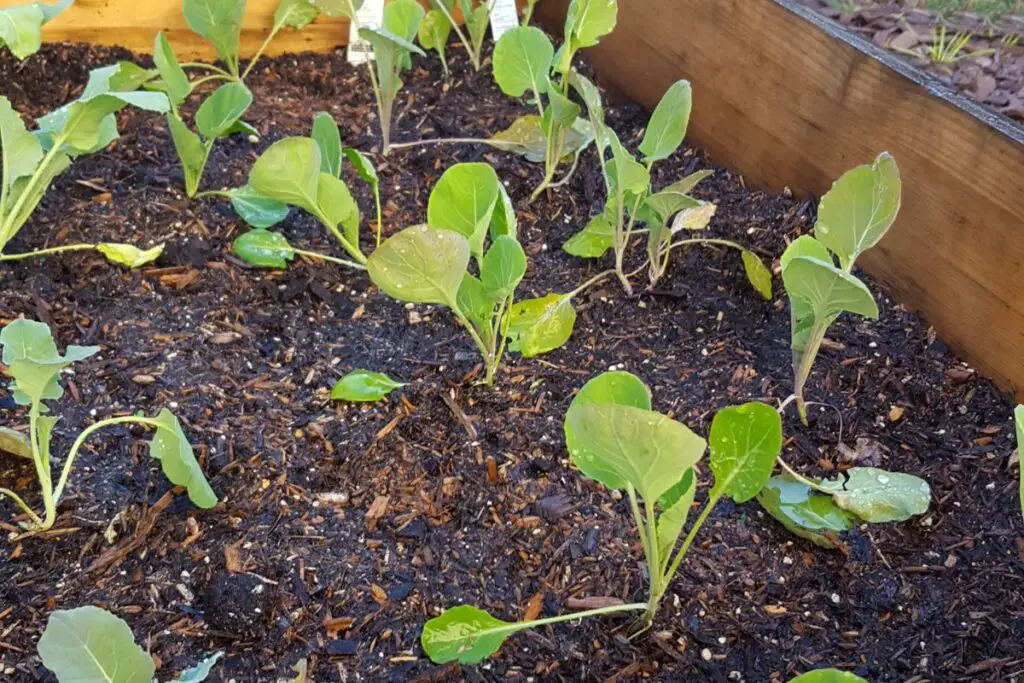
Why is drainage important?
Drainage is always essential, be it in the containers, grounds, or raised beds.
In terms of drainage, raised beds are a better option as the beds don’t accumulate water.
You can control the soil just like the potted plants.
You can choose the ideal soil amendments for the plants you want to grow.
Well-drained soil has good water permeability, allowing the water to drain easily and quickly.
The water in the raised beds won’t stay or leach immediately.
Raised beds with good drainage prevent both underwatering and overwatering.
It also reduces the risk of pests, diseases, and rotting.
Plants that grow in poor soil either rot or die out of dehydration.
If the beds drain well, your plants will be healthy and live for a very long time without suffering from any issues.
Also read: Does A Raised Garden Bed Need Drainage? (+Mistakes To Avoid)
How do I improve drainage in the raised beds?
Despite having many advantages, raised beds will experience poor drainage if you use soil with poor drainage and high clay content.
Low beds can sometimes result in poor drainage because the bed’s soil only stays close to the ground.
If the intention behind making raised beds is poor garden soil, creating shallow beds will not help you.
The plant will also suffer underwatering if the soil you have used is very sandy.
There are many other reasons behind poor drainage in the raised beds.
Here are some 11 steps to improve drainage in the raised beds:
1. Add compost
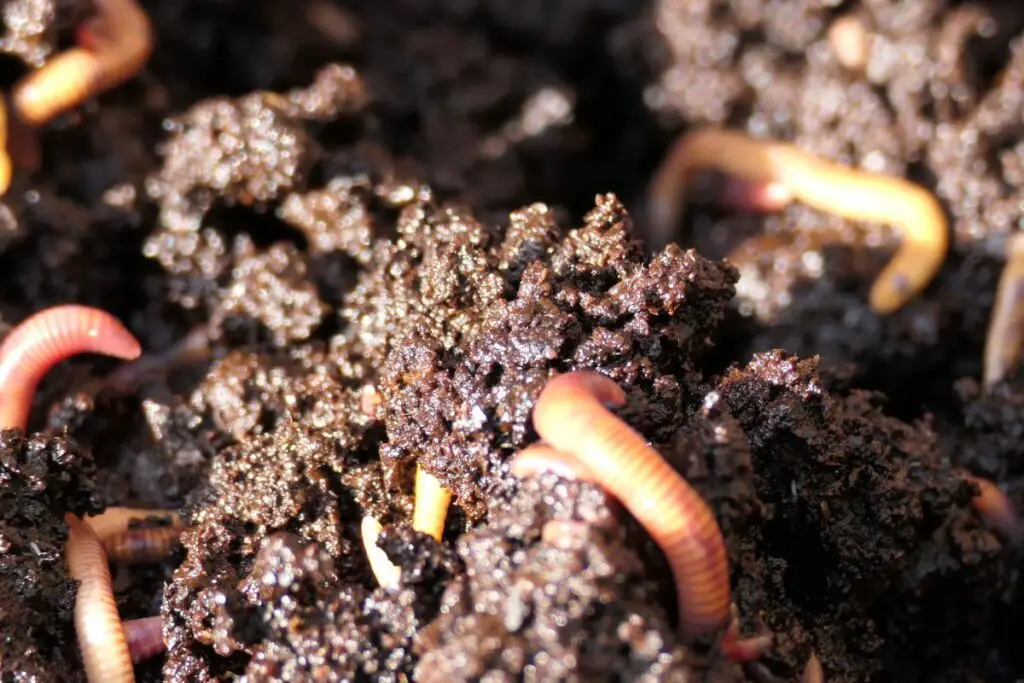
Adding compost to the soil of the raised beds can improve drainage to a great level.
Compost added in the fall takes time to break down.
So, add compost in the spring. It will give better results.
But, since adding compost in the fall protects your plants from the winter cold, add more aged compost that can break down quickly.
You can also add compost as top-dressing instead of mixing it with the soil.
Do it during the growing months of your plants.
Compost adds organic materials to the soil and improves its quality and structure. It adds extra nutrients to the soil.
Compost improves drainage by adding draining materials to the sandy soil and loosening the clay soils.
2. Soil Amendments
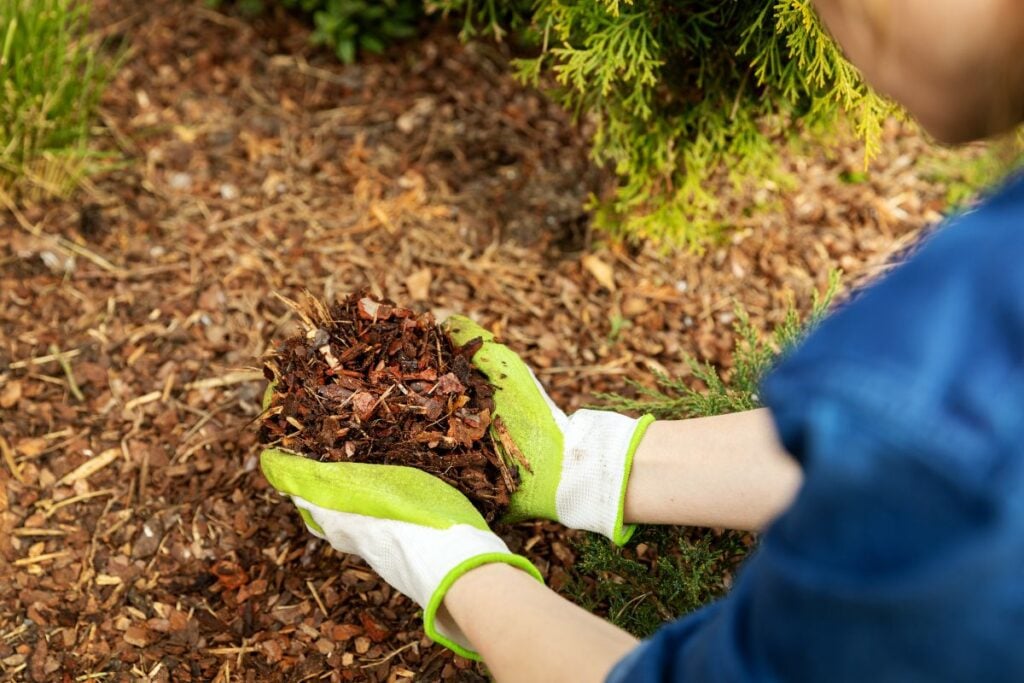
Recall the soil materials you have used if your plants undergo issues due to poor drainage in the raised beds.
If you have not used drainage materials, it is time to amend the soil.
Change the soil’s physical structure and add ingredients that are rich in drainage.
For example, if your soil is heavy or has extreme clay content, you can loosen the heavy soil by adding greensand.
If the soil drains faster than normal, you need to add compost to help retain the moisture.
Before you add anything, consider testing your soil. These amendments can mess up the nutrient level and the pH level. So, be careful.
Here is a list of soil amendments besides compost:
- Coco coir
- Grass clippings
- Greensand
- River sand
- Kelp meal
- Worm castings
- Cornmeal
- Straw
- Perlite
- Pumice
- Vermiculite
Also read: 7 Best DIY Raised Bed Soil Mix: A Step-by-step Guide
Looking for gardening supplies? We have tested 100's of products before recommending them to you guys. Check out our best pick below:
| Image | Gardening Supplies | Best Price? |
|---|---|---|
 Top
Top Top
Top | Raised Garden Bed Kit | Check On Amazon |
 | XLUX Soil Moisture Meter, Plant Water Monitor, Soil Hygrometer Sensor for Gardening, Farming, Indoor and Outdoor Plants, No Batteries Required | No Results |
 Top
Top Top
Top | 82 Pcs Garden Tools Set and Extra Succulent Tools Set | Check On Amazon |
 | Joeys Garden Expandable Garden Hose with 8 Function Hose Nozzle, Lightweight Anti-Kink Flexible Garden Hoses, Extra Strength Fabric with Double Latex Core, (50 FT, Black) | No Results |
 Top
Top Top
Top | Dual Chamber Compost Tumbler | Check On Amazon |
 Top
Top Top
Top | Sunnyglade Plant Stakes | Check On Amazon |
 Top
Top Top
Top | Organic Cold Pressed Neem Seed Oil | Check On Amazon |
 Top
Top Top
Top | Mighty Mint Gallon :-Insect and Pest Control Peppermint Oil | Check On Amazon |
 Top
Top Top
Top | Scotts DiseaseEx Lawn Fungicide | Check On Amazon |
 Top
Top Top
Top | Jacks Classic 20-20-20 All Purpose Fertilizer | Check On Amazon |
 Top
Top Top
Top | 30,000 Seeds Pollinator Attracting Wildflower Mixture | Check On Amazon |
 Top
Top Top
Top | Survival Vegetable Seeds Garden Kit-Over 16,000 Seeds | Check On Amazon |
3. Sheet composting
This method can be applied to both new beds and existing beds.
It is also called lasagna gardening, as you keep layering the bed with certain materials.
When you create a bed, you can take this step in the beginning, and there will be enough space for it.
In the case of existing beds, the soil will deplete by winds, water, pulling out plants, or during soil removal.
So, you can get enough space for it.
In new beds, you apply new sheets, and in existing beds, you re-sheet them.
The rule is first to add a layer of newspaper or cardboard and water it thoroughly.
It will prevent weed growth.
After that, add green and brown materials like compost, peat moss, sawdust, wood chips, or animal bedding.
Layer the bed like you layer compost with the soil.
Ensure the layers are made with 3 inches of green and 5 inches of brown materials.
As the planting season arrives, you don’t have to till the soil or add any extra soil.
When your plant grows, you can continue sheeting by adding mulch around the bed.
Even after a few months of planting, you can continue sheet composting around your plants.
It will work as a mulch and also greatly improve the drainage.
4. Aerating the soil
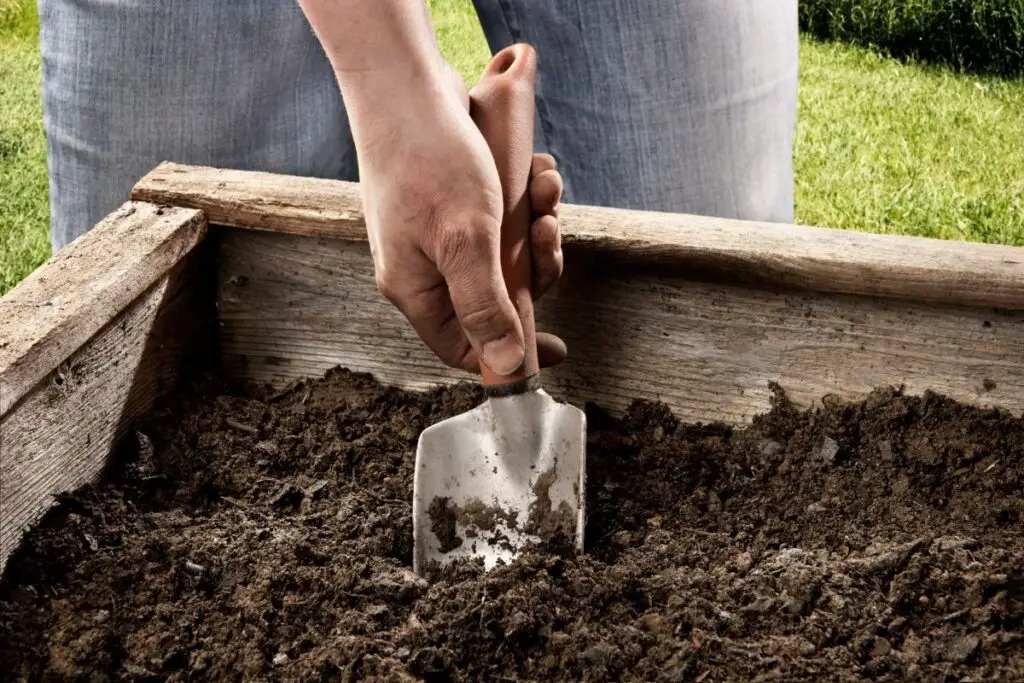
Aerating the soil every 2-3 years increases the air circulation of the soil.
It allows oxygen to enter the soil and dry out the excess moisture trapped in the bed.
Over time, the soil in the raised beds can become compact if not aerated properly.
The moisture remains trapped in the soil and refuses to drain and reach the bottom.
As a result, your plants will undergo overwatering despite growing plants in raised beds.
Broad forks work as an aerator.
Using them helps you aerate the soil deeper.
They lift large soil chunks and break them. It improves the soil aeration much better.
5. Don’t pull the plants out of the beds.
Instead of pulling out the plants during harvest, cut them at the soil surface.
The roots in the soil will break down and help aerate the soil.
It will further improve the soil’s drainage system.
6. Find a good site for your raised beds.
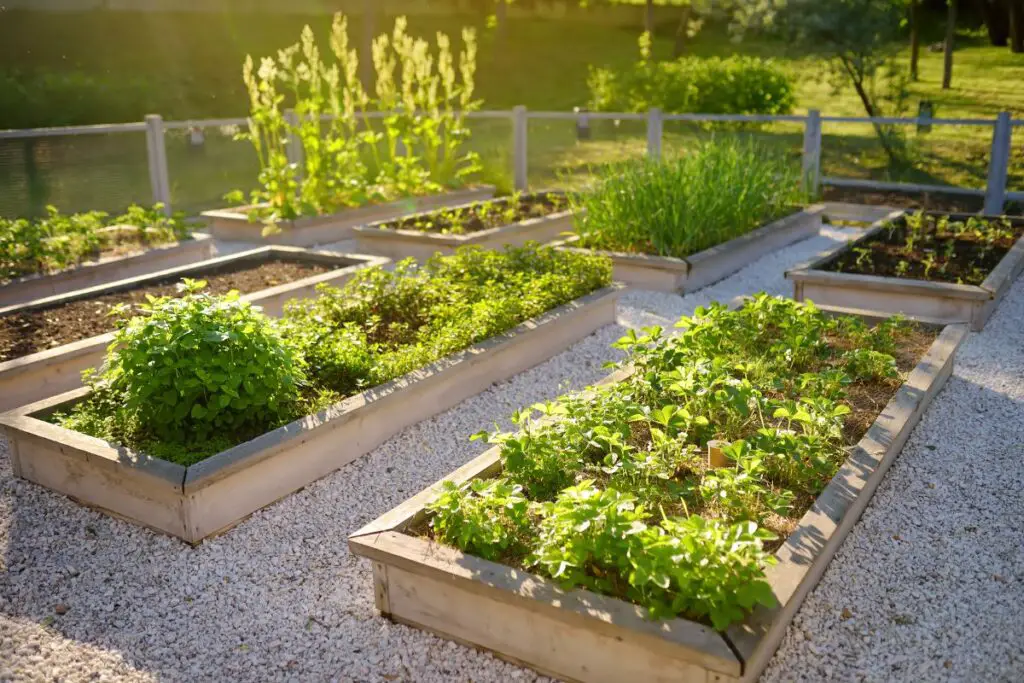
For good drainage, you must look at certain things while choosing a location for your raised beds.
You must check:
- The quality of the soil under the bed.
- The amount of sunlight the location is getting every day.
- The drainage pattern of your garden soil.
Check the soil type of your yard by digging the soil.
If sandy, add certain ingredients like compost to amend the soil and increase the retention properties.
If it is clayey, add sand or compost to increase the drainage quality.
Compost works for both retention and drainage.
However, there are other ingredients too.
Choose a location with sandy, loose, and well-retained soil to skip this amending effort.
Avoid shady spots of your garden, like areas with many trees around.
Keep your raised beds at locations where the sunlight reaches sufficiently.
Before you place your raised bed, check which area of your garden accumulated more water during rains.
Avoid such areas for raised beds.
If you still put your raised bed at such a location, you must put extra effort into creating a separate drainage system.
Also read: Can You Place A Raised Bed On Concrete? (Pros & Cons)
7. The raised bed’s height has to be appropriate.
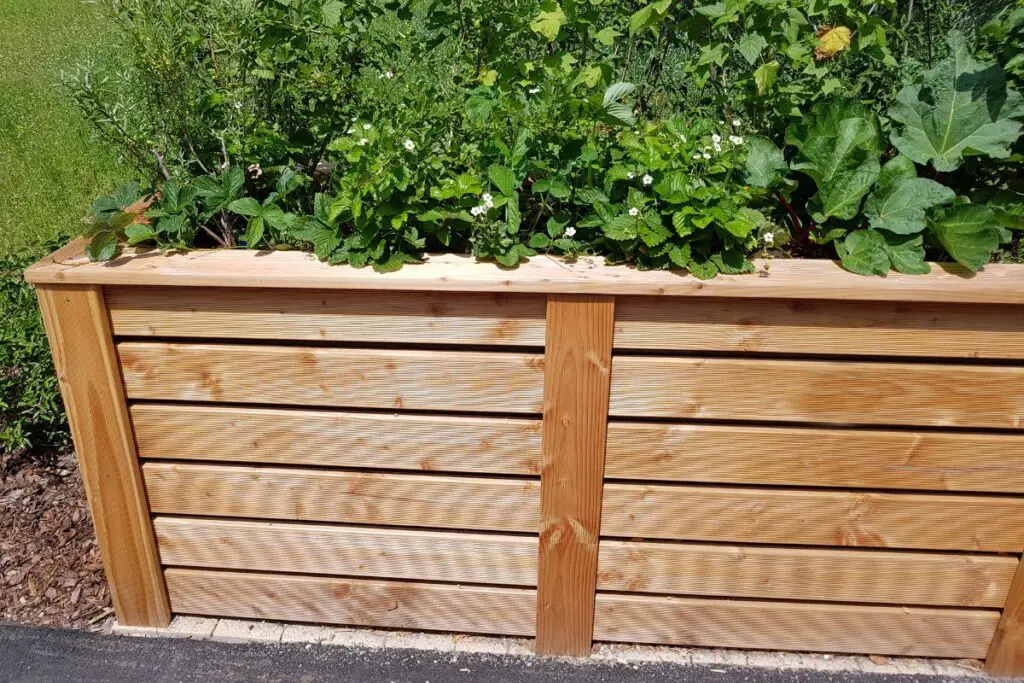
If you want to improve the drainage before placing the bed on a surface, ensure you have a good height.
If the bed is so shallow that the bottom is near the ground soil, there won’t be good drainage.
The water will drain from your bed’s soil but will remain accumulated beneath the bed if the soil surface is poorly draining.
Even if you till the ground soil, the drainage will not be so good due to poor-quality soil.
As a result, the plants will suffer from overwatering and root rot.
You can make shallow beds, but there should be a limit.
At least the height has to be 4-12 inches deep.
If you have already made a shallow bed and started gardening, increase the bed height.
Add soil and drainage materials to fill the bed according to the new height.
Also read: How Deep Should A Raised Garden Bed Be? (With 40 Examples)
8. The soil should be well-draining and not fast-draining
A lot of growers confuse between well-draining soil and fast-draining soil.
Well-draining soil means the soil drains well without accumulating any water.
At the same time, the same soil also maintains the moisture level.
On the contrary, fast-draining soil means the soil drains all the moisture without retaining any.
If this is the case, your plants will experience underwatering and dehydration.
So, check that you use well-drained soil for your plants and not fast-drained soil.
9. Increase drainage around the raised bed too
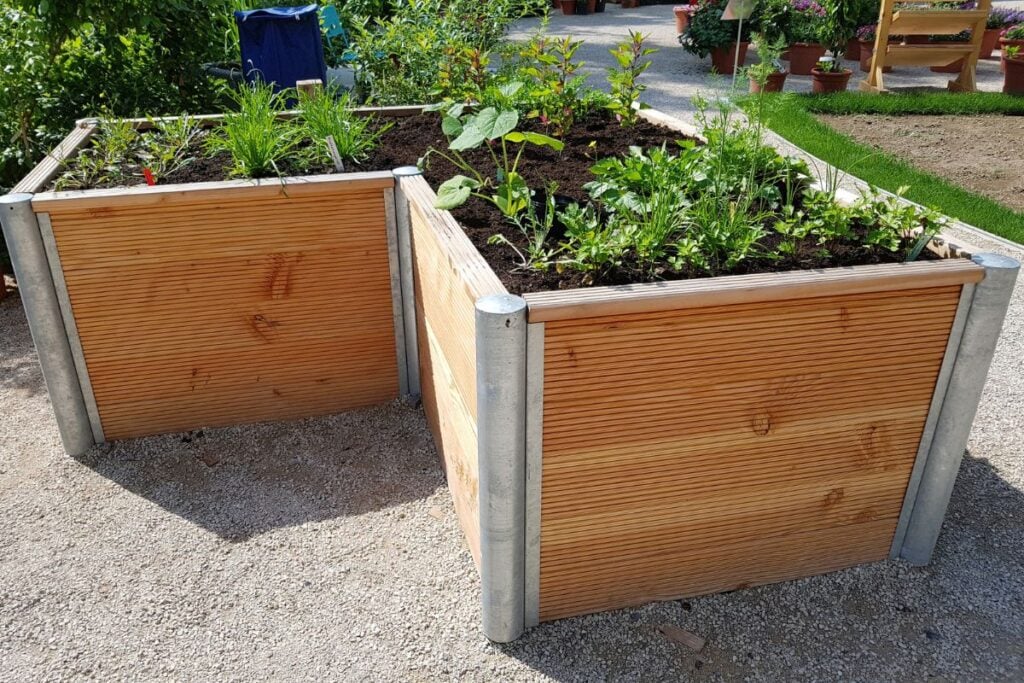
For good drainage, the water not only needs to drain from the bed but also from the garden.
If only the drainage of your raised beds is better, the water will drain from the raised bed soil.
But, if the water doesn’t drain from the garden, it will accumulate under and around the bed.
You will find a mini-pool after some days.
It will lead to overwatering and degrade the quality of your raised beds and the soil.
The soil will begin to erode and invite pathogens.
Besides improving the drainage of your raised beds, ensure the garden soil is well-aerated.
Create drains in your garden to support water runoff that accumulates due to excessive water or heavy rains.
A rain garden will also work as the garden contains plants that enjoy growing over wet soils.
10. Install a drainage system for your raised beds
Installing a drainage system can improve the drainage of your raised beds greatly.
There are two ways of doing it:
- With drainage pipes above or below the ground
- Foundation material that drains well
If you install drainage pipes, do not send the water toward your or your neighbors’ homes.
Before you dig the soil, check that there are no buried gas lines in your garden.
Add something that drains well for foundation materials like gravel, granites, rocks, gravel, or stones.
11. Use raised bed liners.
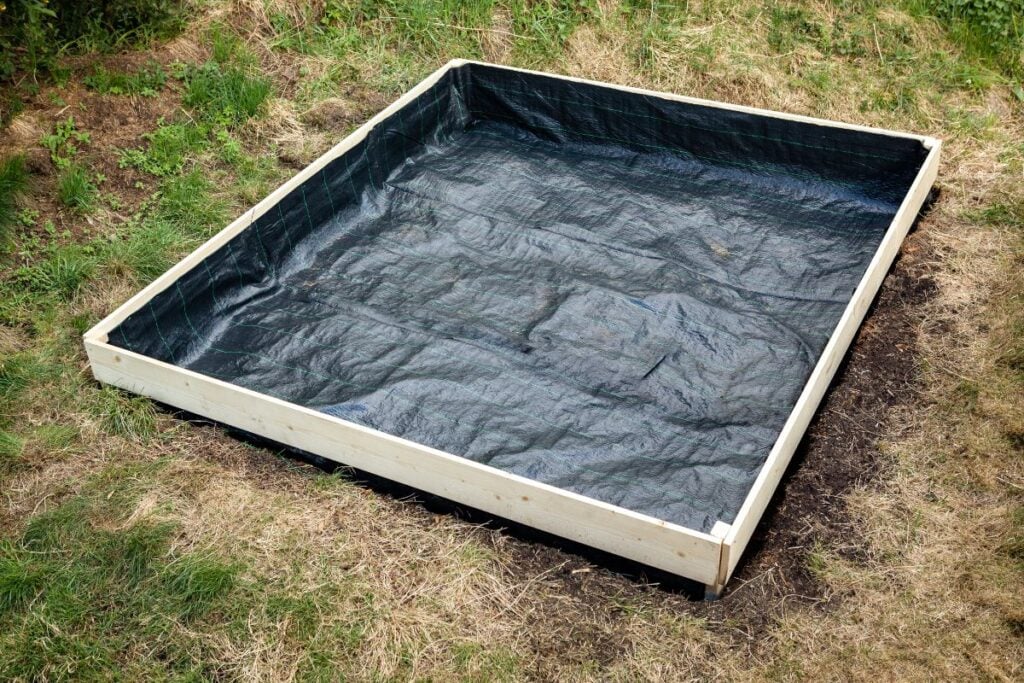
Raised bed liners drain the excess water from the bed instead of allowing the soil to do it.
The liner doesn’t allow the soil to take and store the excess water and drain it before it accepts the moisture.
A liner made of cloth or water-permeable products will drain the excess water from the raised bed without losing any extra soil, moisture, or nutrients.
Some raised bed liners are landscape fabric, hardware fabric or wire mesh, and canvas.
Also read: 17 Materials To Put In Bottom Of Raised Bed? (Cheap & Best Alternatives)
What things should I avoid in raised beds?
Since there are so many ways and options to improve raised bed drainage, there are certain things that you should not use:
- Non-water-permeable liners store the water instead of draining the water. As a result, your plants will suffer from overwatering.
- Many people prefer using cover crops because they can improve the soil quality and make it organic. Since organic soil helps retention and drainage, many growers use them. But, cover crops also increase the retention quality. If that happens, your plants will suffer from drainage issues. So, your cover crops are ultimately deteriorating the plants’ health.
- The same is with the mulching. Adding mulch improves retention quality, but over time, the mulch breaks down and makes the soil organic. It further improves drainage. That is why most people use them. I recommend using other methods instead of mulches.
However, you can still try using cover crops and mulch as they might improve drainage after turning organic.
To use cover crops, plant them in fall, spring, or summer, depending on when you need them.
Weeks before planting your chosen plants, turn the cover crop back to the soil of your raised beds.
As the crops become organic, it will make the soil organic too.
As a result, it will also improve your plants’ health and drainage.
Use mulch the same way. Some good mulch options are:
- Straws
- Grass clippings
- Dried leaves
- Wood chips
- Compost (it will be the best)
If you think they are not helping in drainage, try other methods and don’t use them further until the priority is moisture retention.
But, on the contrary, cover crops and mulching are good choices for winter seasons.
During winters, most of the plants become dormant.
So, they don’t require watering like in spring and summer.
Besides, the evaporation rate is slow.
Instead of watering, you can add cover crops and mulch to preserve the moisture.
It will keep the plants safe from overwatering and cold.
Mulching is good for improving drainage in the winter seasons.
Final thoughts
There are multiple ways of improving drainage in raised beds. You can either do it before you start building the raised beds or in your existing beds.
Ways to improve drainage include adding compost, soil amendments, aerating the soil, increasing bed height, improving drainage around the beds, including drainage systems, finding the right location for your beds, and so on.
You can try any one of your choices. I recommend preferring the easy ones, like compost, soil aeration, taller beds, and finding a flat surface for your beds.
Some methods can also improve retention. So, for precaution, it is better to avoid those methods, like mulching and using cover crops. If you add drainage liners, opt for water-permeable products and not plastic liners.
Reference: ScienceDirect, American Society of Agronomy, Noble Research Institute, Soil for Raised Beds, Raised Bed Gardening.
